Artist James Jean's “Hide Out”, by Dan Brunn Architecture, pays tribute to its Frank Gehry design roots
By Justine Testado|
Friday, May 26, 2017
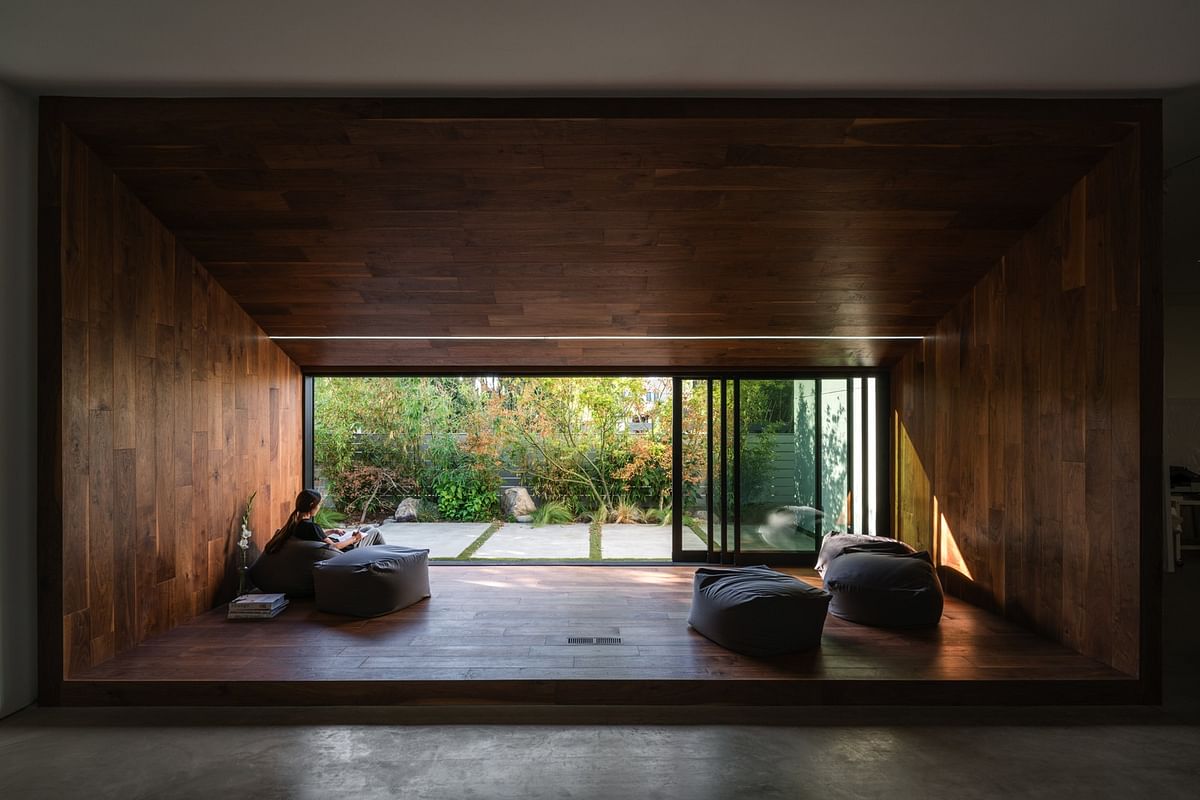
Related
L.A.-based architect Dan Brunn was put in charge of designing the “Hide Out”, a 3,600 square-foot single-family home in L.A.'s “Little Osaka” neighborhood that comes with a vivid history. In the 1970s, art collectors Edwin Janss Jr. and his wife Ann commissioned Frank Gehry to design the home, which is considered his first single-family project. Although Gehry's vision wasn't fully realized, the Jansses referenced his original plans and modified the design to what eventually became a gallery-like space for family parties, fundraiser events, and displaying their private art collection. Throughout the 1970s and '80s, the home was a hotspot for the contemporary L.A. art scene.
Now owned by notable visual artist James Jean as his residence and studio, the home was redesigned with a fresh minimalist aesthetic — while incorporating design details from Frank Gehry's original plans and maintaining its open gallery-like atmosphere. Most recently, the AIA L.A. chapter named the Hide Out a winner in their 2017 Residential Architecture Awards.
Dan Brunn Architecture shared more details about the home below.
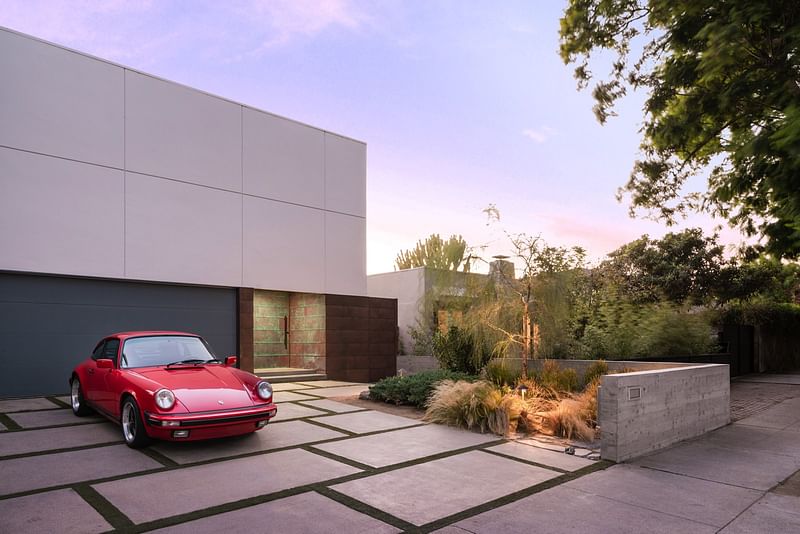
“The entire first floor was gutted to create an open-air plan that accommodates work and display space for the owner, artist James Jean, as well as domestic necessities. Interiors are arranged around an existing oversized rectangular skylight. New windows were added to bring additional natural light into the kitchen and living areas. Brunn created a dynamic undulating staircase wall and utilized primary building materials—such as wood, concrete, and glass—as a nod to the architectural shapes and material palette famously used by Gehry at the time.”
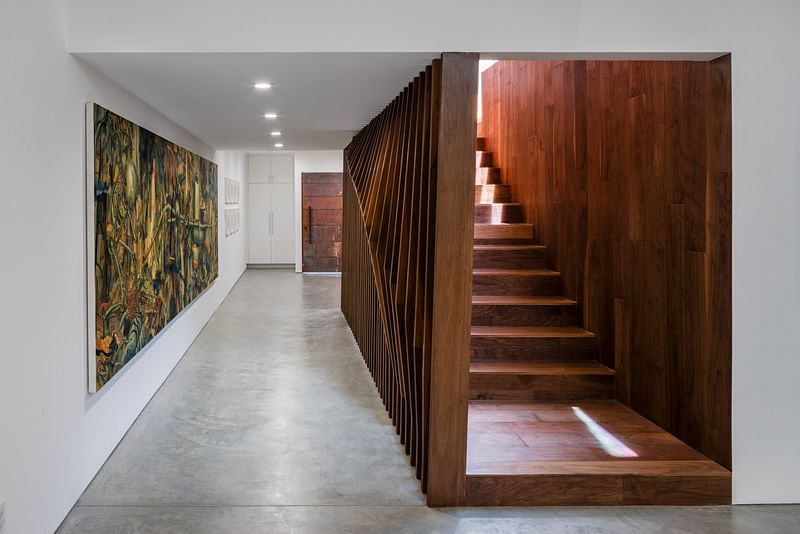
“A fish-scale copper-clad entryway leads into a compressed vestibule that begins to introduce dominant themes of white vertical planes and the concrete ground plane, both disrupted by walnut surfaces. Before the expansive living area, the sculptural statement of the home emerges in the form of an expressive stairway. The first hint appears upon arrival, with the beginning of a walnut wall leading from the entry into the living room, but with a slight protrusion into the walkway. The shifting shapes and angles are in homage to Gehry as well as to Jean, who features flowing arabesques in his detailed work.”
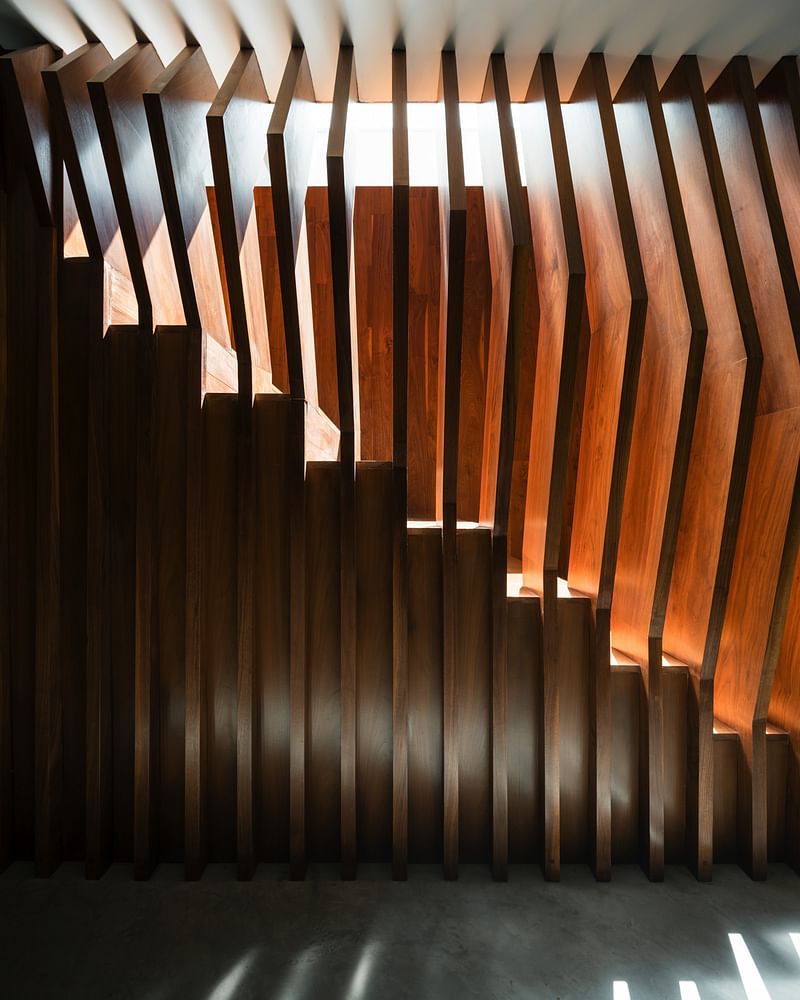

“A rectangular skylight (the only architectural detail executed from Gehry’s original plan) remains as a fundamental design element. Brunn re-thought it by outfitting it with stretch fabric to create an ambient glow, and installing LED lights that can emit glowing color. During the evening hours, the glowing ceiling plane transforms the mood of the space through the play of color.”

“Adjacent to the living space is the dining area and kitchen. The kitchen wall features a folded partition to conceal appliances while hosting parties or entertaining guests. The all-white kitchen is serene, featuring white back-painted matte glass along built-in cabinets and drawers. Adding dimension to the all-white surfaces, Brunn plays with material finishes—from matte to glossy—to accentuate differences in utility.
Minimal furnishings define “rooms” within the open plan and provide comfortable seating, yet allow art to remain center stage.”
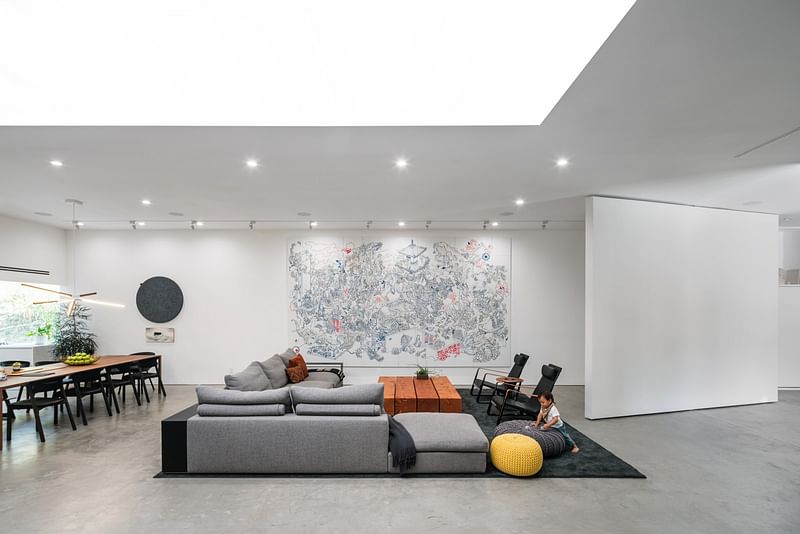
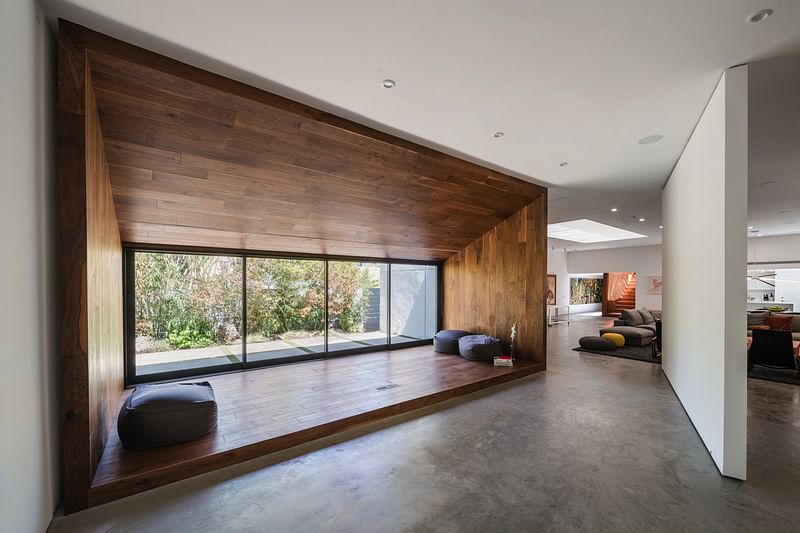
“Taking cues from Japanese tea houses, Brunn designed a wooden box-like volume within that space for a variety of activities: social gatherings, meditation, or music performance. Walnut planks create canted walls that radiate out from the floor-to-ceiling sliding glass wall, with the wood surface rising along the slanted ceiling.”
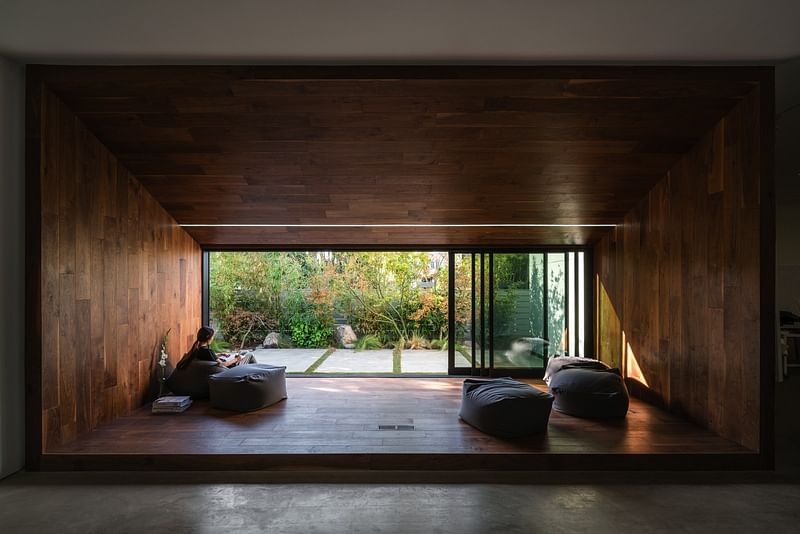
“A lush garden area is visible and reachable through the glass sliders. A Japanese garden featuring traditional species of bamboo, gingko, and Japanese maple was conceived by Hitoshi Kitajima of Kaisei-en, who worked at the Tokyo Imperial Palace. He carefully choreographed the plants to beckon a serene and peaceful setting for adults, while offering a play area for the Jeans’ toddler son. A concrete bench with wood slats relates to the interior and faces a wall that the artist will use as outdoor painting space.”

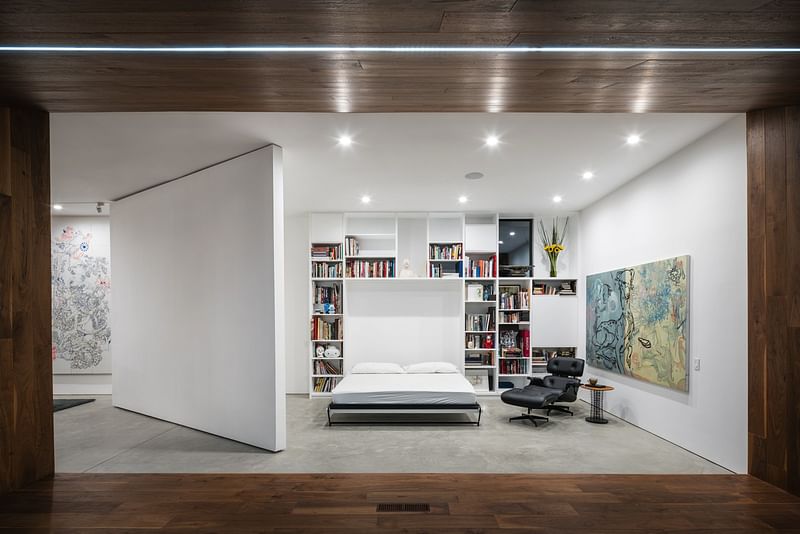
“A 14' x 12' pivoting wall at the far end of the house either hides or reveals a multi-purpose room. A built-in murphy bed emerges from the floor-to-ceiling bookcase to transform the library into a guest room. The library offers varied storage areas, open shelving for books, and closed cupboards for private items.”
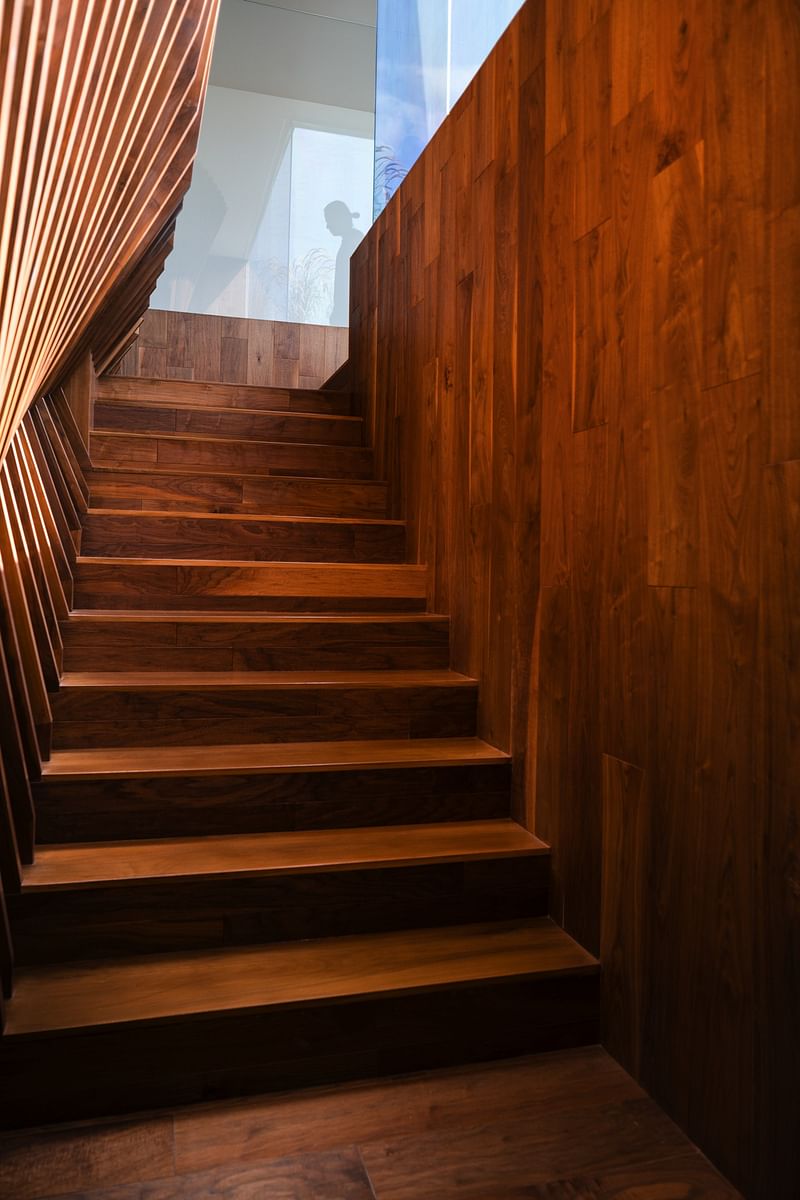
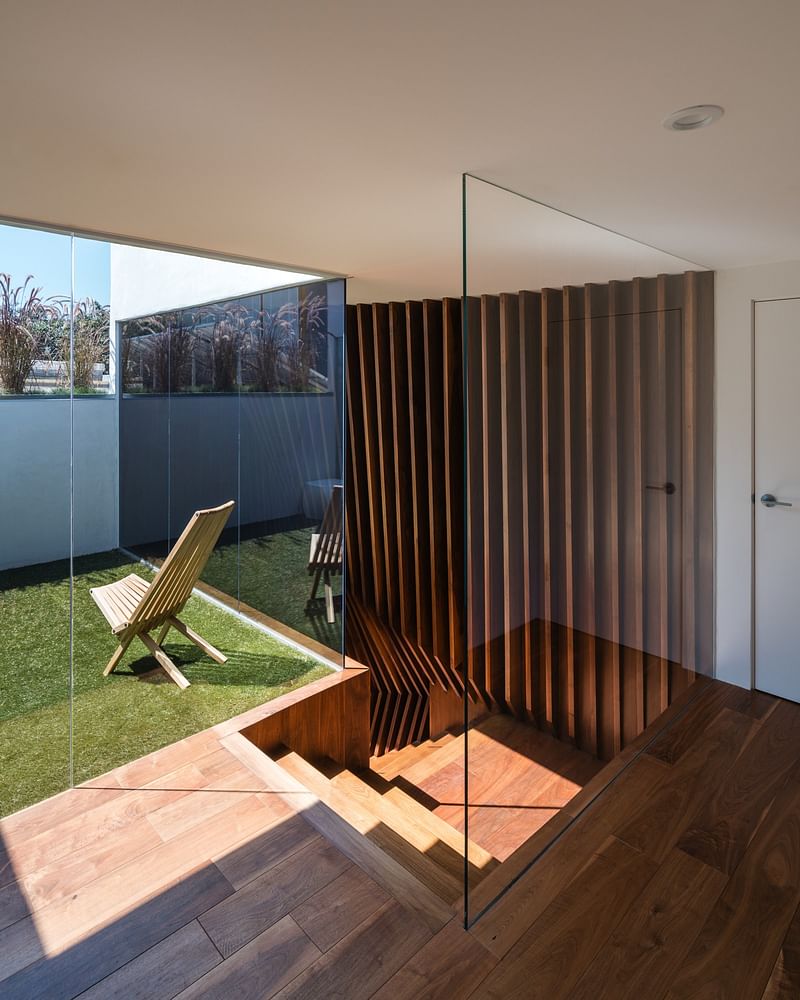
“Upstairs, natural light seeps into the stairwell tunnel through a glass-enclosed open-air meditative garden accessible through the master bathroom. Previously boxed in with no access to the outdoors, this area was designed as a garden space by Brunn to acknowledge Gehry’s original intention to make the area an encased greenhouse.”
More project drawings in the gallery below.

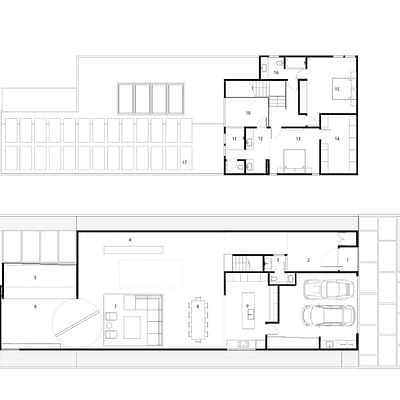

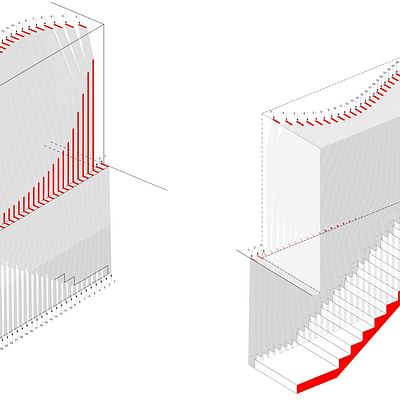

Share
0 Comments
Comment as :